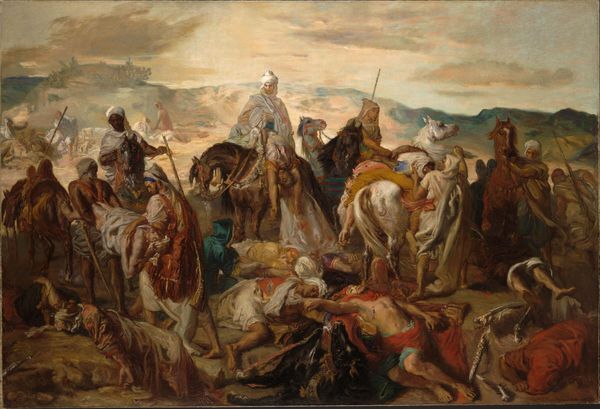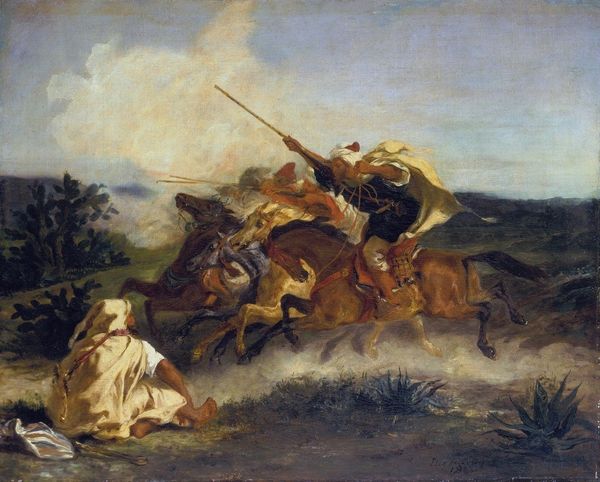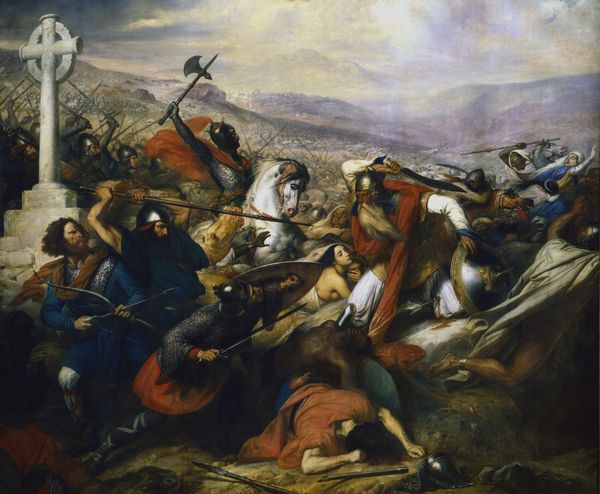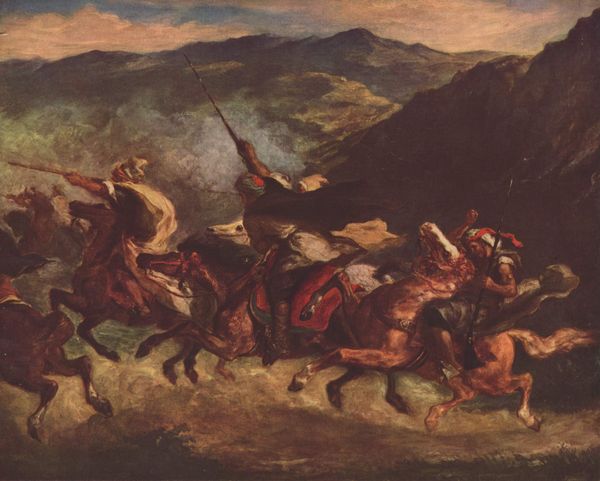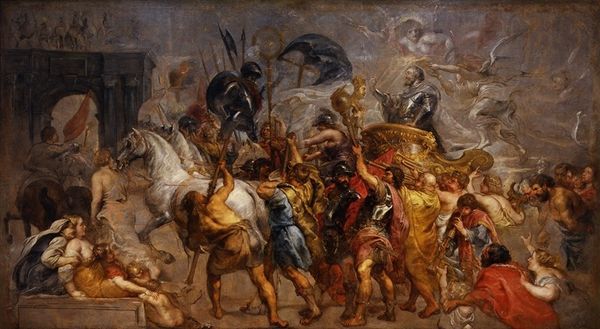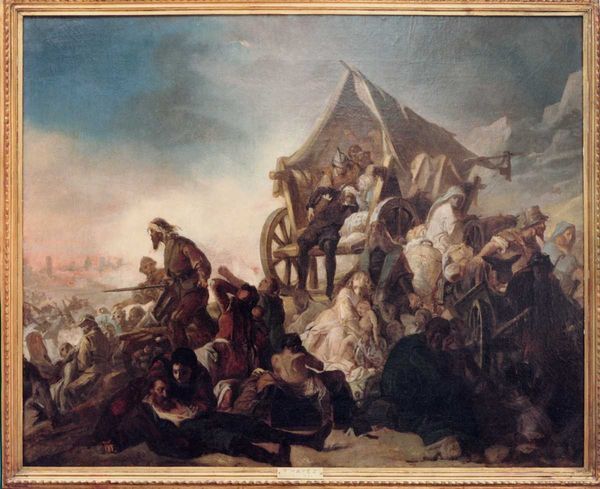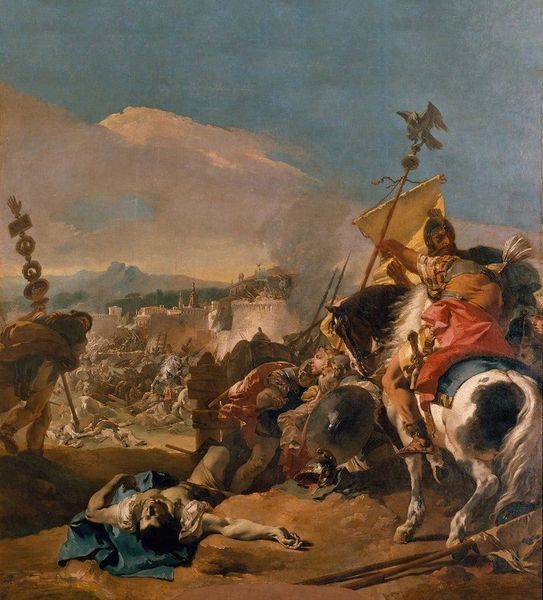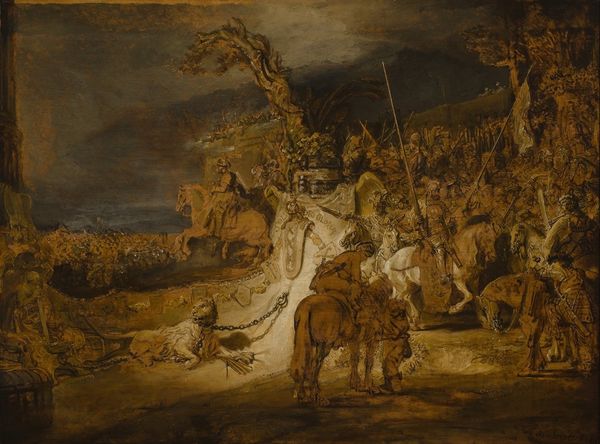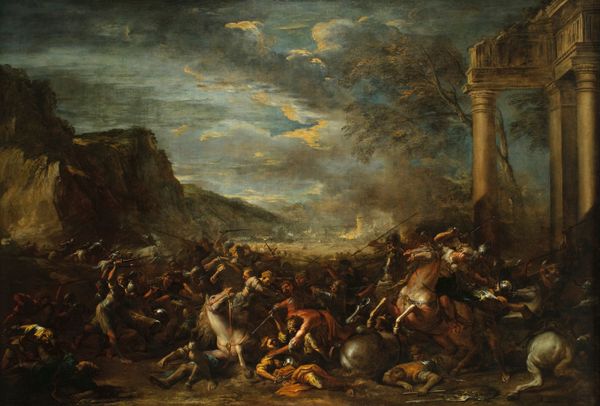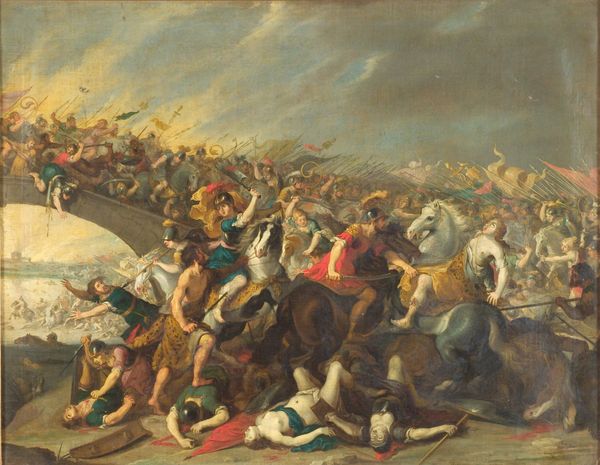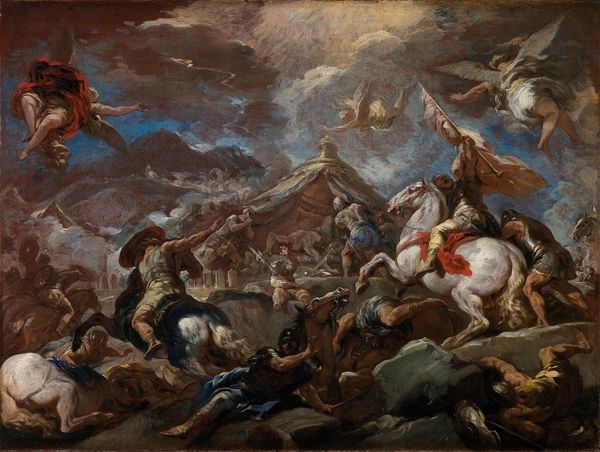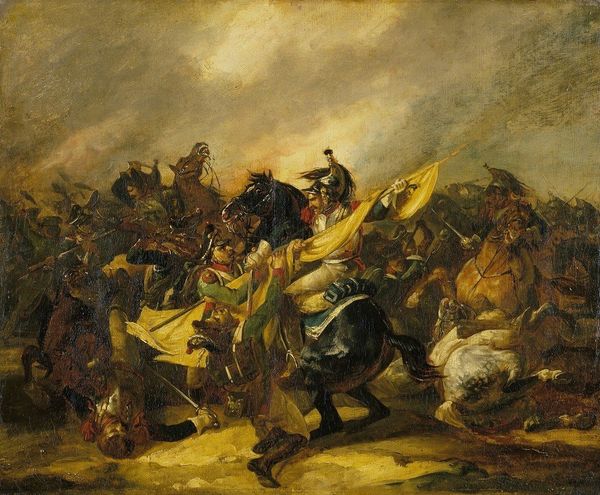
painting, oil-paint
#
narrative-art
#
painting
#
oil-paint
#
landscape
#
figuration
#
oil painting
#
romanticism
#
history-painting
Copyright: Public domain
Editor: Here we have Ary Scheffer’s “Bataille de Tolbiac,” painted in 1837. It’s an oil painting depicting a chaotic battle scene. The first thing that strikes me is the contrast between the dark, swirling mass of figures and the almost serene sky. How do you interpret this contrast within the work? Curator: The chromatic opposition serves to create a sense of sublime terror, wouldn’t you agree? Note the way the darker tonalities define the depth of field, pushing back the horizon in favor of compositional drama in the foreground. The textural density achieved through visible brushstrokes likewise works to animate what is ultimately a canvas of death. Does the almost classical contrapposto exhibited by the figure atop the horse perhaps further highlight the divergence between the immediacy of slaughter with the promise of a more tranquil future? Editor: That’s fascinating! I hadn’t considered the formal elements as contributing to the terror in that way. The horseman’s pose does feel deliberately staged amidst all the chaos. Does the way Scheffer organized these figures into the battle imply any historical or theoretical significance? Curator: Certainly. Romanticism relies heavily on strong diagonals. See how Scheffer deploys a counter-diagonal through the central figures. It enhances the drama by suggesting movement. Moreover, consider the effect of chiaroscuro which amplifies emotion. This heightened contrast directs the viewer’s attention and intensifies the feeling of instability and dread within the image itself. Editor: So, it’s the interplay of light, shadow, and the deliberate arrangement of forms that create this specific emotional impact, more than a literal depiction of a battle? Curator: Precisely. Form precedes narrative. Understanding the structure helps understand the emotional core of the artwork. Editor: That’s given me a lot to think about. I’ll definitely look at paintings differently now. Curator: And that is why we continue looking, scrutinizing, questioning and learning, don’t you agree?
Comments
No comments
Be the first to comment and join the conversation on the ultimate creative platform.
